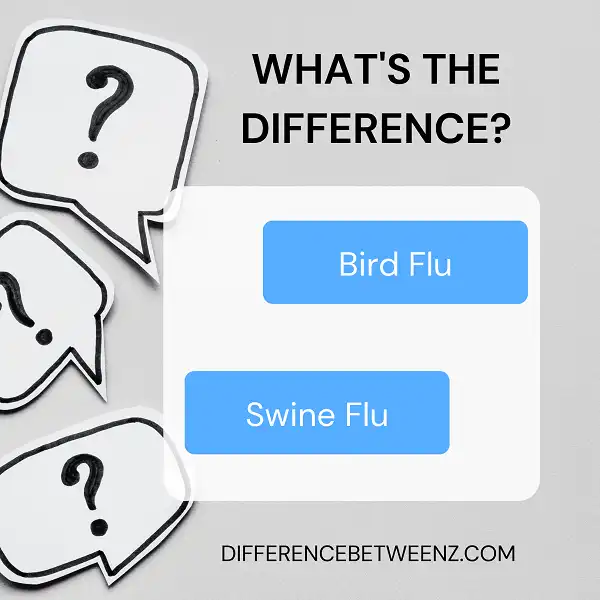The flu is a contagious illness that can spread quickly, leading to potentially serious health complications. It’s also something with which most of us are familiar – and yet, not all types of the flu are created equal. Bird Flu and Swine Flu are two variations of this virus that differ from one another both in terms of how they manifest and how they transmit between individuals. In this article, we’ll discuss the difference between Bird Flu and Swine Flu – including their symptoms and treatments – so that you know exactly what to look out for if either virus affects you or someone you love.
What is Bird Flu?
Bird Flu, also known as Avian Influenza, is a type of influenza virus that is found in birds. It can spread from bird to bird through contact with saliva, nasal secretions, and feces. Bird Flu can be very dangerous for both humans and animals alike.
- While Bird Flu does not usually spread from person to person as easily as other influenza viruses, there have been human cases reported worldwide.
- It is important to take preventive measures if you come into close contact with domesticated or wild birds such as wearing masks and gloves and avoid eating poultry products that have not been cooked thoroughly.
- If Bird Flu is suspected in your area, it is best to report it promptly to local authorities so they can take the necessary steps to contain the virus.
What is Swine Flu?
Swine Flu is a strain of influenza that is commonly found in pigs. It is also known as the H1N1 virus and was first identified in 2009. Swine Flu has the potential to spread from person to person, although this depends on a number of factors including individual contact with infected animals and contact with humans carrying the virus.
Symptoms of Swine Flu include fever, runny nose, sore throat, body aches, and fatigue. Swine Flu can be prevented through proper hygiene practices such as washing hands frequently and avoiding close contact with people who are sick. Vaccines are available to help protect against the Swine Flu. It’s important to pay attention to local news and reports related to Swine Flu, so people can stay informed on frequent outbreaks or other significant developments.
Difference between Bird Flu and Swine Flu
Bird Flu and Swine Flu are two distinct types of viruses, and the information available to us today still tells us that they are completely different despite being quite similar in nature.
- Bird Flu is a highly contagious viral influenza, mainly found and spread amongst wild birds predominately seen near areas with large populations of other birds.
- The Bird flu is also known as Avian Influenza (AI) and is caused by the Type A strain of Influenza viruses, while the Swine Flu more commonly known as the H1N1 virus is caused by the Type A strain of Influenza that affects both humans and animals.
- The main difference between Bird Flu and Swine Flu is Bird Flu causes serious infections in many species of birds and aquatic animals like fish and mammals, but it has not been seen to affect humans directly.
- On the other hand, Swine Flu gives rise to human infections that can be spread from one infected person to another without even making direct contact with pigs.
Moreover, this type of influenza does not seem to have any vaccine against it at present; however, Bird Flu vaccines are being developed due to its potential fatal consequences for people who come into contact with Bird migration paths or bird markets in certain countries.
Conclusion
As you can see, there are some key differences between bird flu and swine flu. It’s important to be aware of these distinctions so that you can protect yourself and your family from both types of influenza. If you think you may have either type of flu, it’s best to consult a medical professional right away. Stay healthy this season by familiarizing yourself with the difference between bird flu and swine flu!


